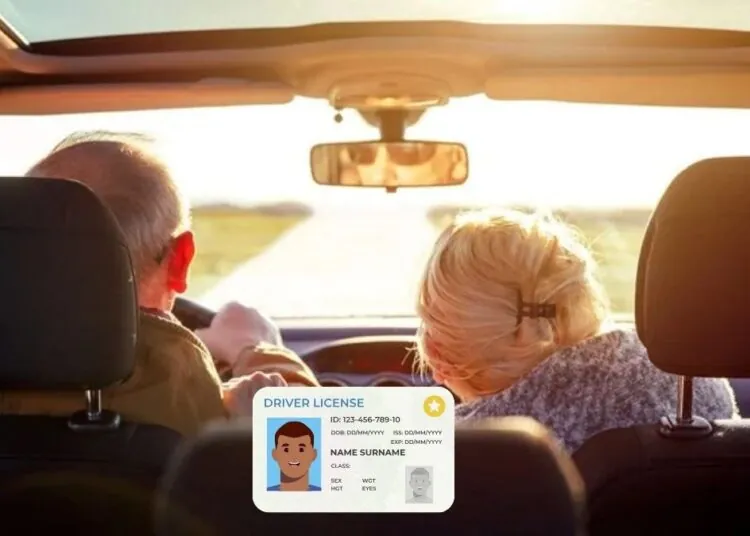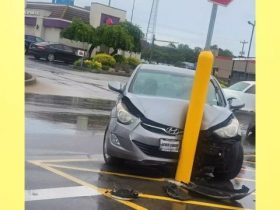As the population of New Mexico continues to age, the issue of license renewal for senior drivers has become increasingly important. With a significant number of residents over the age of 65, understanding the process, requirements, and options available for license renewal is crucial. This article provides a comprehensive guide to license renewal for seniors in New Mexico in 2024, covering everything from state regulations to tips for ensuring safe driving.
Overview of Aging Population in New Mexico
New Mexico is home to a growing senior population. According to the U.S. Census Bureau, as of 2023, approximately 19% of the state’s population is aged 65 and older. This percentage is expected to increase, reflecting national trends of an aging population. For many seniors, maintaining their driver’s license is not only a matter of convenience but also independence and quality of life.
Importance of License Renewal for Seniors
Driving can become more challenging as individuals age due to changes in vision, hearing, reaction time, and cognitive abilities. However, staying mobile is crucial for seniors, particularly in a state like New Mexico, where public transportation options may be limited, especially in rural areas. Therefore, understanding the process of license renewal, along with the associated regulations, is vital for senior drivers to ensure they can continue driving safely and legally.
Purpose of the Guide
This guide aims to provide seniors and their families with all the information they need regarding license renewal in New Mexico. From understanding the specific requirements to preparing for vision tests and exploring alternative transportation options, this article covers it all.
Demographics and Statistics
Aging Population in New Mexico: Facts and Figures
New Mexico is among the states with a higher-than-average percentage of older adults. As of 2024, the population of seniors (aged 65 and above) is projected to surpass 400,000, representing about 20% of the total population. Cities like Albuquerque and Las Cruces have seen the most significant increases in their senior populations, with Albuquerque alone hosting over 90,000 seniors. The rural counties, such as Taos and Lincoln, also have a high proportion of seniors, highlighting the need for accessible transportation and driver’s license services in these areas.
Driving Trends Among Seniors in New Mexico
Despite the challenges associated with aging, many seniors in New Mexico continue to drive. The state’s expansive rural areas and the necessity of driving for daily activities contribute to the high number of senior drivers. However, studies indicate that the driving patterns of seniors are changing. They tend to drive fewer miles annually, avoid driving at night, and steer clear of heavy traffic whenever possible. This adaptation is crucial for maintaining safety on the road.
Accident Statistics and Age-Related Considerations
According to the New Mexico Department of Transportation, drivers aged 65 and older are involved in a significant proportion of car accidents. While they account for about 15% of the state’s drivers, they are involved in 20% of fatal crashes. These statistics underscore the importance of ensuring that senior drivers are physically and mentally capable of operating a vehicle safely.
New Mexico’s Licensing Requirements for Seniors
General Requirements for All Drivers
In New Mexico, the standard requirements for renewing a driver’s license include proof of identity, residency, and legal presence in the United States. All drivers must also pass a vision test when renewing in person.
Specific Requirements for Senior Drivers (65+)
For seniors, New Mexico has specific regulations designed to ensure that they can continue to drive safely. Once a driver turns 75, they are required to renew their license every year, as opposed to the standard four- or eight-year renewal period for younger drivers. This annual renewal allows for more frequent monitoring of a senior driver’s abilities.
Medical and Vision Tests: What Seniors Need to Know
Vision tests are mandatory for all drivers renewing their licenses in person, but for seniors, this requirement is even more critical. If a senior fails the vision test at the Motor Vehicle Division (MVD), they may be required to obtain a statement from an eye care professional certifying their vision is adequate for driving. In addition to vision requirements, seniors may be asked to provide a medical statement if there are concerns about their ability to drive safely due to health conditions.
Step-by-Step Guide to License Renewal
How to Renew a Driver’s License in New Mexico
Renewing a driver’s license in New Mexico can be done in person at any MVD office, or for eligible drivers, online. The process involves providing necessary documentation, passing a vision test, and paying the required fees.
Online vs. In-Person Renewal Options
While online renewal is convenient, it is not available for everyone. Seniors aged 79 and older are required to renew their license in person, allowing the MVD to perform necessary vision and medical assessments. Those under 79 may be eligible for online renewal, provided they meet the criteria set by the MVD.
Fees and Documentation Required
The fee for renewing a driver’s license in New Mexico varies depending on the length of the renewal period. For seniors, a one-year renewal fee is $5. Required documentation typically includes a valid ID, proof of residency, and proof of legal presence in the U.S. For seniors who need a medical or vision statement, additional documentation from healthcare providers may be required.
Deadlines and Grace Periods
It’s important to note that New Mexico does not offer a grace period for expired licenses. Therefore, seniors should plan to renew their licenses before the expiration date to avoid penalties or legal issues.
Medical and Vision Considerations
Mandatory Vision Testing for Seniors
As mentioned earlier, vision tests are mandatory for all senior drivers renewing their licenses in person. This test ensures that seniors meet the minimum visual acuity standards required for safe driving. If a senior does not pass the initial vision screening at the MVD, they may be referred to an optometrist or ophthalmologist for further evaluation.
Medical Reporting Requirements
In addition to vision tests, seniors may be required to submit medical reports. These reports are necessary if the MVD has concerns about a driver’s ability to operate a vehicle safely due to medical conditions such as dementia, Parkinson’s disease, or other impairments. The MVD relies on these reports to determine whether a senior should continue to hold a driver’s license.
How to Prepare for a Vision or Medical Exam
Preparation for a vision or medical exam is essential. Seniors should schedule an eye exam with an optometrist or ophthalmologist before their license renewal date. For medical exams, it’s advisable to consult with a primary care physician who can provide an accurate assessment of the senior’s overall health and ability to drive safely.
Driving Safety Tips for Seniors
Adapting to Physical and Cognitive Changes
Aging naturally leads to physical and cognitive changes that can affect driving. Seniors may experience slower reaction times, reduced flexibility, and decreased strength. To adapt, it’s important for seniors to stay physically active, maintain a healthy diet, and manage chronic conditions effectively. Regular check-ups with healthcare providers are crucial.
Vehicle Modifications for Senior Drivers
There are various vehicle modifications that can help senior drivers maintain their independence. These modifications include installing larger mirrors, using pedal extenders, and choosing vehicles with advanced safety features like rearview cameras and lane departure warnings. These adaptations can make driving more comfortable and reduce the risk of accidents.
Resources for Safe Driving Courses in New Mexico
Safe driving courses specifically designed for seniors are available in New Mexico. Organizations like AARP offer driving courses that can help seniors refresh their knowledge of the rules of the road and learn new defensive driving techniques. Completing these courses may also make seniors eligible for discounts on auto insurance.
Legal and Ethical Considerations
Family Conversations About Driving Safety
One of the most challenging aspects of aging and driving is knowing when it’s time to give up the keys. Families should have open and honest conversations about driving safety. These discussions should focus on the senior’s well-being and the safety of others on the road.
Legal Implications of Unsafe Driving
If a senior continues to drive despite significant impairments, there can be legal consequences. In New Mexico, driving with a medical condition that significantly impairs the ability to drive safely can lead to the suspension or revocation of a driver’s license. Additionally, seniors who cause accidents due to impaired driving may face legal liabilities.
Alternative Transportation Options for Seniors
When driving is no longer safe, seniors should explore alternative transportation options. New Mexico offers several programs designed to assist seniors with mobility. These include public transportation services, senior shuttles, and ride-sharing options like Lyft and Uber. For those living in more rural areas, family members and community organizations can often provide transportation assistance.
Support and Resources for Seniors
State and Local Resources
New Mexico offers a variety of resources to assist seniors with driver’s license renewal and transportation. The New Mexico Aging and Long-Term Services Department provides information on transportation services, while the MVD offers resources specifically tailored to senior drivers.
Non-Profit Organizations Offering Assistance
Non-profit organizations like the AARP and the National Council on Aging (NCOA) provide valuable resources for senior drivers. These organizations offer driving safety courses, information on legal rights, and support for seniors considering giving up their licenses.
How to Stay Informed About Changes in Laws
Laws and regulations regarding senior drivers can change. It’s important for seniors and their families to stay informed. Subscribing to newsletters from organizations like the MVD, AARP, and other senior advocacy groups can help seniors keep up with any new legislation or requirements.
Conclusion
Recap of Key Points
License renewal for seniors in New Mexico involves understanding specific requirements, passing necessary medical and vision tests, and being aware of the legal and safety implications of driving as an older adult. By staying informed and prepared, seniors can continue to enjoy the independence that driving provides while ensuring their safety and the safety of others on the road.
Encouraging Safe Driving Practices
Seniors who wish to continue driving should prioritize their health, stay active, and seek out resources that can help them maintain safe driving practices. Families should play an active role in supporting their senior loved ones by having open conversations about driving safety and exploring alternative transportation options when necessary.
Final Thoughts
Driving is more than just a means of getting from one place to another—it’s a symbol of independence. For seniors in New Mexico, maintaining that independence requires an understanding of the state’s licensing requirements, a commitment to safe driving, and a willingness to adapt to the changes that come with aging. With the right preparation and support, seniors can continue to enjoy the freedom of the open road well into their golden years.












Leave a Reply